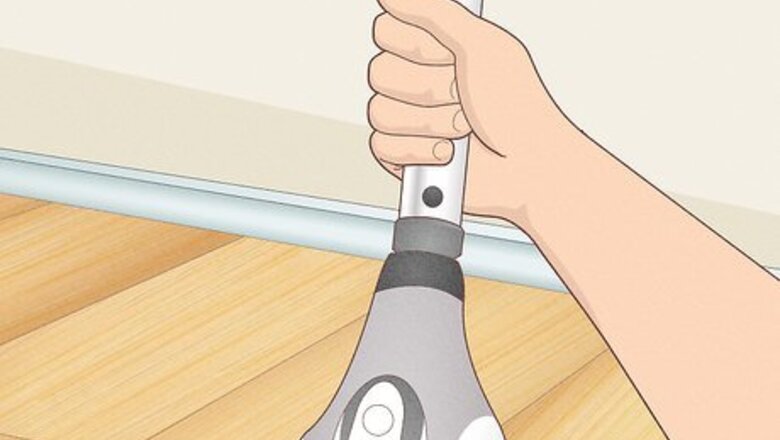
views
Assembling the Mop
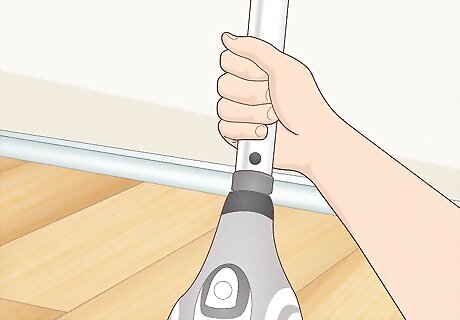
Attach the handle to the body of the steam mop. First, slide the handle into the opening on the mop, making sure to push it past the line on the handle. Keep pushing until you hear or feel the handle click into place. On some models, there is a large attachment screw that holds the handle in place. Use a flathead screwdriver to twist the screw until it’s firm. Consult your user manual for assembly instructions that are specific to your model.
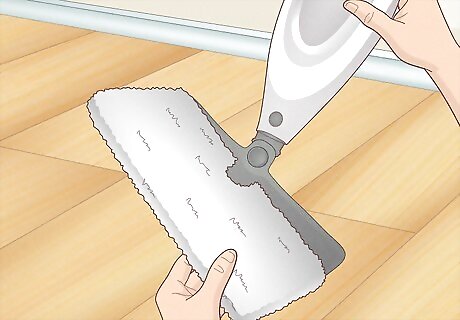
Put a cleaning pad on the mophead. Use the lavender loop on the side of the cleaning pad to slide the pad over the mophead. Then use the fasteners around the mophead to keep the pad in place. Once the pad is locked in, snap the mophead into the base of the mop. Make sure the cleaning pad is attached striped-side down. Both sides can be used for cleaning, but there is only one way to correctly put it on. Put the cleaning pad on while your steam mop is turned off.
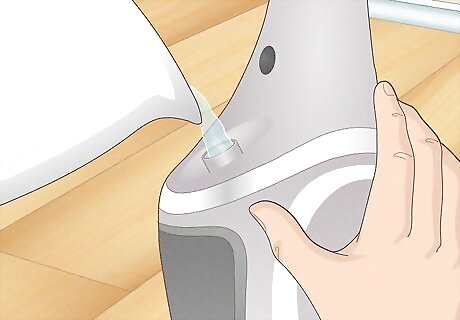
Fill the water tank with distilled water. While the mop is unplugged, pull or twist the cap on the water tank to open it. Then fill the included measuring cup up to the line with distilled or soft tap water and pour it into the tank. Replace the cap to finish assembling your shark steam mop. Distilled water reduces mineral buildup that can clog the steam nozzle or leave streaks on the floor while you clean. Make sure not to overfill the mop or it will start dripping onto your floors while you use it. Only fill the tank with water. Cleaning chemicals, scented perfumes, or even vinegar might damage the mop. If your model has a removable water tank, make sure it’s securely snapped back into place before you begin mopping.
Steam Mopping the Floor
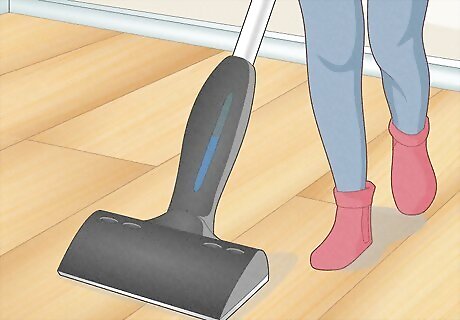
Sweep or vacuum the floor before steam mopping. Remove as much loose dust and dirt as possible so the steam mop can work its best. The mop might scratch your floor if there’s too much debris on it, or the water might mix with dirt and spread over the floor. If you’re mopping tile floors in moisture-heavy rooms like the bathroom or kitchen, wipe away any surface grime on the tiles or grout beforehand to make your cleaning pad last longer.
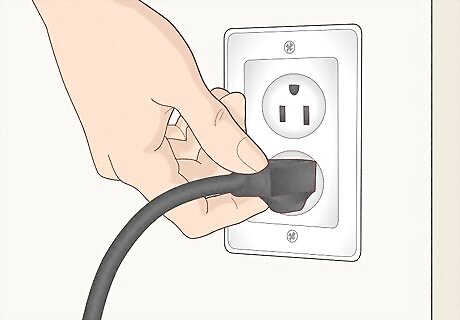
Plug the mop in to turn it on. Pull the wound-up power cord out of the mop and plug it into a 120-volt outlet. The on/standby button will start flashing blue. The mop only takes about 30 seconds to fully heat up. Since the mop heats up so quickly, wait until you are 100% ready to begin mopping before plugging it in.
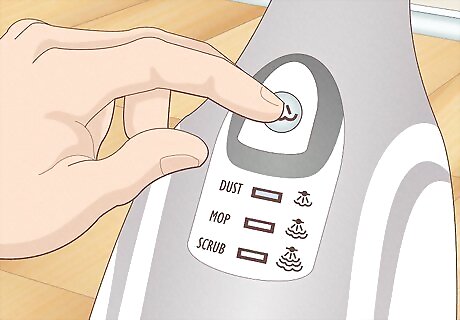
Choose a mop setting for the type of floor you’re cleaning. Use the on/standby button to select the dust, mop, and scrub settings. Once you choose a setting, the button will change from blinking to solid. Choose between: Dust (light cleaning and dusting): This setting lifts light dirt and sanitizes the floor. Use this setting for laminate, bamboo, hardwood, or marble floors. Press the on/standby button once to activate. Mop (everyday cleaning): Choose "mop" to clean and sanitize small messes and heavily trafficked floors. This setting is meant for hardwood, marble, tile, and stone. Press the on/standby button twice to activate. Scrub (deep cleaning): Select "scrub" to sanitize floors and remove tough messes and stains on tile, stone, linoleum, or carpet (with a carpet glider attachment). Press the on/standby button three times to activate. To clean hardwood, use a highly absorbent microfiber cleaning pad to keep the floors dry. Don’t add any cleaning chemicals that might break the protective seal on the floorboards. The dust setting is safest.
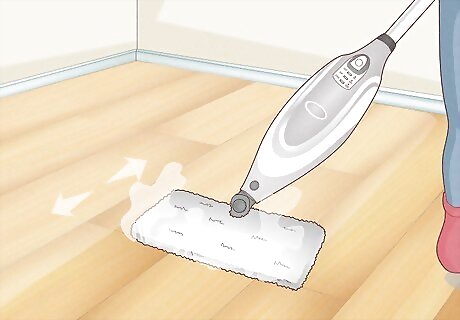
Mop the floor with forward and backward motions. Pump the handle to dampen the cleaning pad, then push the mop back and forth in small sections (just like a traditional mop) to begin cleaning. Start in the corner of your room furthest from the exit and work toward the door. The sloshing of the water in the tank will naturally produce steam while you clean. Pump the handle again while mopping to produce extra steam for stubborn or stuck-on messes. Mop with the grain of the floor if you’re cleaning laminate or hardwood. Keep the mop moving at all times. If it’s left to idle in one spot too long, the excess heat and moisture can damage that spot on your floor, especially if it's made of wood.
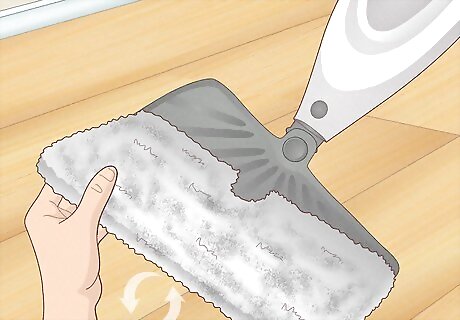
Flip the cleaning pad over when one side gets too dirty. Quickly swivel the mophead around to use the other side of the pad to keep mopping. If you need to replace the pad, unplug the mop and wait 2 or 3 minutes for it to cool down. Then you can safely handle the mophead and put on a new pad.
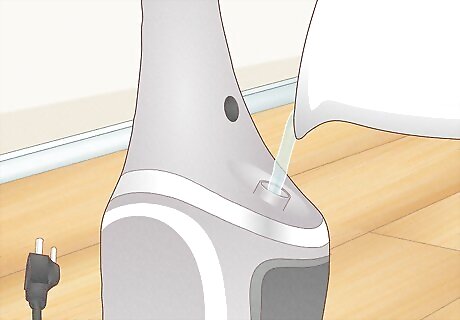
Refill the water tank mid-mop, if needed. If you run out of water, unplug the mop and wait 2 or 3 minutes for it to cool. Then refill the tank with the included measuring cup, making sure not to overfill it.
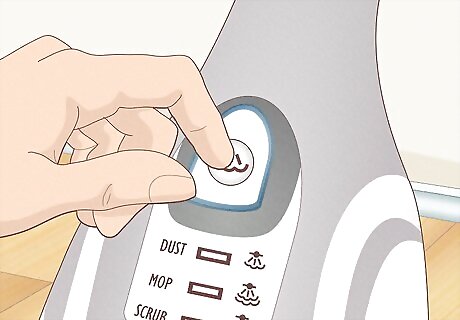
Turn off the mop with the on/standby button when you’re done mopping. First, press and hold the on/standby button until it starts flashing blue to stop steaming. Then unplug the mop and let it stand upright for 2 or 3 minutes while it cools. When it’s cool to the touch, it’s safe to disassemble and store. Press the power cord release button to wind the cord back inside the mop.
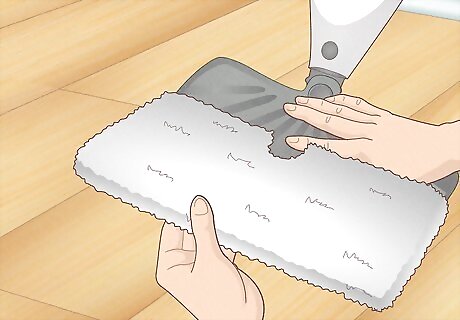
Remove the cleaning pad when the mophead is cool. Release the fasteners holding the pad in place and pull on the lavender loop to slide the pad off. Always remove the damp pad before storing the mop to avoid mildew or mold. Some models have a no-touch release button or switch that ejects the cleaning pad without having to touch it. Shark steam mop pads are reusable and machine washable. Shake away loose dirt and snip off loose threads before washing.
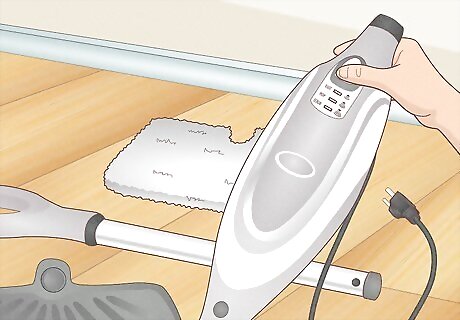
Disassemble the mop for storage. First, unscrew the water tank cap and pour out any leftover water into a sink or tub. Replace the cap when you’re done. Then remove the mophead by pressing the release button near the bottom of the mop body. Hang the mop vertically from a large hook to store it, keeping the mophead separate.













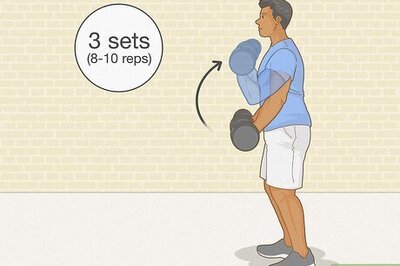
Comments
0 comment